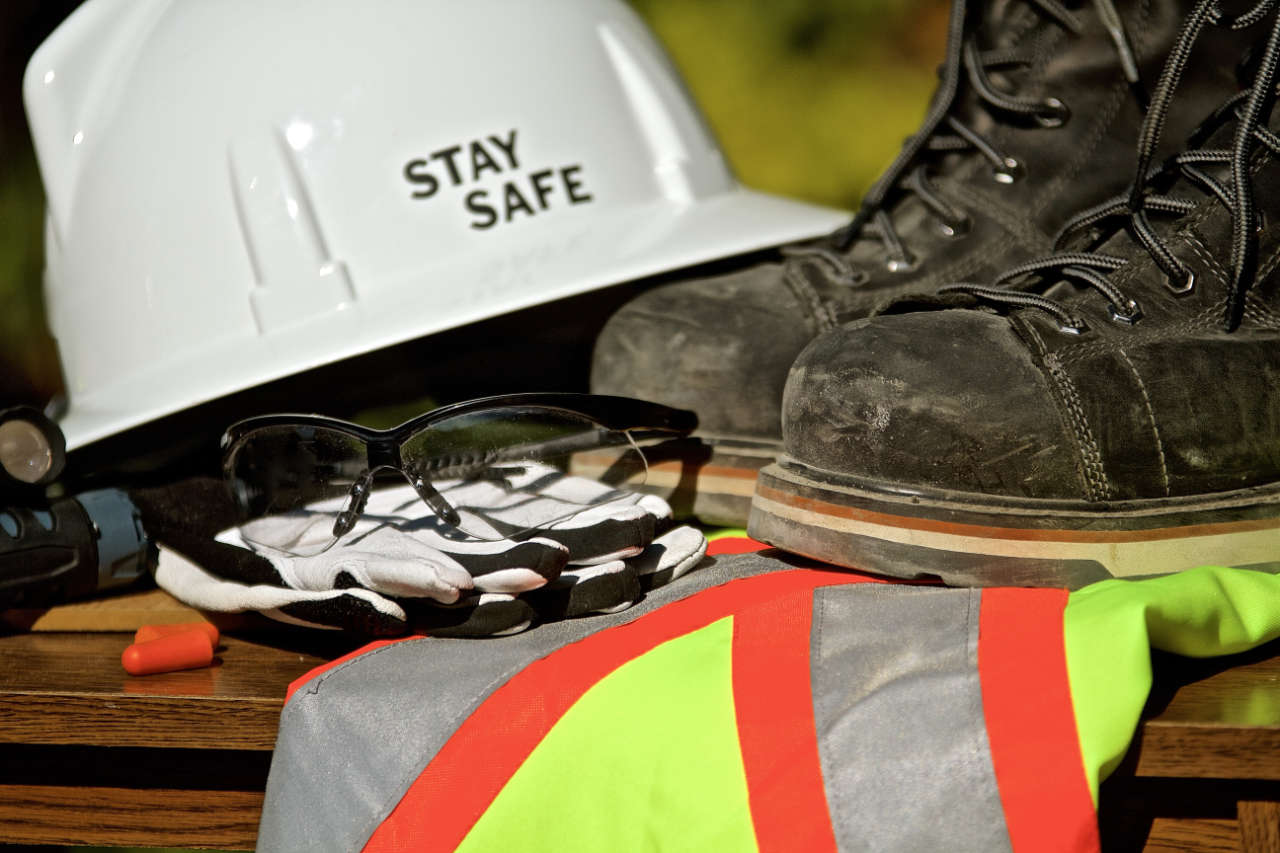
- Discover the benefits of health and safety training for your organisation and employees.
- Learn what health and safety training is and how it can be delivered in the workplace.
- Understand how to choose the right learning and training courses for your organisation.
While workplace safety has improved dramatically over the past few decades, reducing employee injuries and workplace-related illnesses remains a priority. With over 580,000 workplace injuries in 2018/19 and 111 people killed at work in 2019/20, effective health and safety training plays a vital role in keeping employees safe and healthy at work. It is also a mandatory requirement under the Health and Safety at Work Act 1974.
Health and safety training makes commercial sense, too. From boosting organisational effectiveness to reducing costs, health and safety training can positively impact the bottom line and deliver a positive return on investment. With workplace-related ill-health costing UK businesses nearly £10bn in 2017/18 and over 28m working days lost, it pays to create a positive health, safety and wellbeing culture at work.
All employees are required to undergo health and safety training. Our Health and Safety Awareness Course helps ensure employees can work safely, identify workplace hazards and know how to report incidents and potential safety issues.
What is health and safety training?
Health and safety training helps keep employees safe from harm, reduces risk and helps employers meet their compliance obligations.
Training teaches workers how to do something such as safely move a load and provides them with information so they can carry out their work without risk of injury or long-term ill-health. Learning can take many forms – from informal on-the-job training through to accredited courses, leading to certification and qualification.
There are many ways you can bring training to your organisation:
- Induction training – this type of training, such as our Health and Safety Induction training, is usually given to new starters in your organisation, helping them understand essentials such as emergency procedures and how to report workplace incidents.
- Refresher training – ensures that employees remain up-to-date on health and safety procedures and retain knowledge over the longer term.
- Classroom training – more formal training sessions where employees attend talks, discussions and workshops on safety and wellbeing, usually led by a workshop facilitator.
- Online learning – Flexible, cost-effective training that can be completed at a pace and time suited to each employee. Modern eLearning platforms such as SHINE from Praxis42 make monitoring and managing training across an organisation simple. Online training often includes interactive tools and assessments to help track employee progress and learning.
- On-the-job training – a mixture of feedback, workplace shadowing and staff meetings, this type of training is usually aligned to a specific organisation’s needs but can lack structure and effectiveness. A lack of record-keeping means it’s hard to prove compliance to health and safety legislation if required by an enforcing agency.
- Blended learning – is used to describe a combination of learning interventions that achieve the desired aim or objectives. A good example is that employees who undertake manual handling operations would complete the Praxis42 Manual Handling Awareness eLearning course. They learn basic principles and then attend classroom practical training that applies to the manual handling operations they perform as part of their job.
Why offer health and safety training?
Healthy and safety training is required by law. It isn’t optional.
The Health and Safety at Work Act 1974 requires that organisations provide training, information, and instruction ‘as far as reasonably practicable’ to ensure employees’ health, safety, and welfare.
Subsequent legislation has expanded on this, such as the Management of Health at Work Regulations 1999 requiring organisations to identify when training should be provided based on a risk assessment or training needs analysis, such as for new starters.
What are the benefits of health and safety training?
Training isn’t just about ensuring you’re complying with the law.
Health and safety training benefits both your organisation and your employees.
- Lowers costs – Health and safety training can see a positive return on investment, with a range of savings across an organisation such as fewer sick days from injuries and occupational diseases and conditions.
- Investing in people – Organisations with a regular training programme are attractive places to work, which improves motivation and wellbeing, resulting in a higher skilled workforce and calibre of applications for new roles while reducing employee turnover. A strong record in health and safety is a positive PR message that raises your organisation’s profile.
- Positive culture – Employers who invest in employee training are viewed more positively by employees than those who skimp on training, resulting in improved morale, better staff relations, and productivity.
- Increases efficiency – Training that is part of workplace risk assessments can lead to more effective working practices, with process improvements often an outcome of risk assessments and employees being clearer on tasks and procedures.
- Reduce workplace risks – All workplaces contain risks. Training employees in health and safety awareness can highlight potential issues before an incident occurs, protecting employee health.
How to choose the right health and safety training
Understanding what health and safety training is and how to choose the right approach is vital.
Health and safety training is relevant to all employees in an organisation, from raising employee awareness to equipping responsible persons with the tools and techniques to conduct effective risk assessments or help employees know what to do in an emergency, such as carrying out duties as a fire warden.
The first step is to undertake a training needs analysis across the organisation and against the risk profile developed from the risk assessments previously conducted. This will highlight where training forms part of the control measures for particular risks and the training frequency required to meet the refresher obligations placed on employers.
It’s important to consult employees on the type of training needed but ultimately, it is the employers obligation to ensure that suitable training is provided. This includes topics such as fire safety and the best method, such as online learning courses.
Questions to ask when choosing the right training include:
- Does it meet legal requirements? Training should support your organisation’s compliance with relevant legislation, guidance and risk assessment.
- Does it address skill and knowledge gaps? Map out the skills your employees need, such as Asbestos Awareness training or Fire Warden training, and compare these with existing skills and knowledge. Choose training courses to fill any gaps and ensure that records are kept.
- Does it increase awareness or competence? All personnel benefit from awareness training, including employees, managers and directors. It helps everyone understand how to spot potential issues, how to report them, and actions to take to help control health and safety risks.
- Is it accredited or recognised? Look for training that is recognised or accredited by industry bodies, such as IOSH, the CPD or specialist organisations such as Independent Asbestos Training Providers (IATP).
- How is training delivered? Classroom and instructor-led training can be costly and inflexible. Online training allows employees to complete training at their own pace, along with interactive tools and assessments.
- How is training managed? Organisations need to monitor and track training across teams and provide proof, such as end assessment results and completion certificates, to show they are complying with any legal requirements. Look for online training platforms such as SHINE, which allow you to deploy, monitor and create tailored training programmes and provide compliance information.
Make sure your employees are aware of workplace health and safety issues with our Health and Safety Awareness training. Developed by experienced health and safety consultants, our course is IOSH Approved and CPD Certified and gives employees the information they need to work safely.

Adam Clarke
Managing Director (Consulting)
